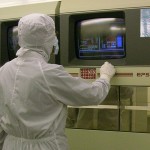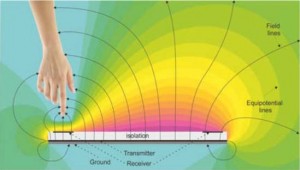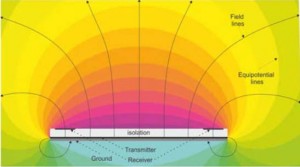EVANSVILLE, IN—Systems integrator Evana Automation Specialists has received a contract to supply three automated assembly machines to a Tier 1 automotive supplier. The machines will produce electronic key fobs.
Dyson to Build R&D Center
MALMESBURY, UK—Appliance manufacturer Dyson Ltd. is building a new R&D center here to support its growing electronics design activity.
Dyson to Build R&D Center
MALMESBURY, UK—Appliance manufacturer Dyson Ltd. is building a new R&D center here to support its growing electronics design activity.
Systems Integrator to Build Assembly Machines for Key Fobs
EVANSVILLE, IN—Systems integrator Evana Automation Specialists has received a contract to supply three automated assembly machines to a Tier 1 automotive supplier. The machines will produce electronic key fobs.
Systems Integrator to Build Assembly Machines for Key Fobs
EVANSVILLE, IN—Systems integrator Evana Automation Specialists has received a contract to supply three automated assembly machines to a Tier 1 automotive supplier. The machines will produce electronic key fobs.
Ambient light controller has on-chip light sensors
 An lighting controller IC from ams has integrated light sensors and is designed to bring control capabilities to luminaire, light engine and replacement lamp manufacturers.
An lighting controller IC from ams has integrated light sensors and is designed to bring control capabilities to luminaire, light engine and replacement lamp manufacturers.
The AS721x senses the ambient daylight and enables the delivery of constant lux levels in the space by managing subtle adjustments as the amount of outside light varies.
“Integrating a sensor-based manager into each luminaire optimizes the overall responsiveness and efficiency of the lighting system, maximizing energy savings. The approach also delivers accurate lumen maintenance over time and temperature variations, and allows fully connected luminaire systems to respond to building- or space-level command and control strategies,” said ams.
Photopic sensors built with nano-optic filters integrated into the AS721x can be used for energy-saving daylighting control systems which can be Bluetooth networked in an IoT configuration.
According to Sajol Ghoshal, who is responsible for Emerging Sensor Strategies at ams: “The AS721X family, with Broadcom’s WICED Smart Bluetooth and SmartBridge platform, delivers a secure, plug-and-play connection to the IoT for big data aggregation and the anticipated wave of machine learning.”
The integrated device should simplify lighting controller node design by reducing the need for discrete components, including sensors, processors, memory, and I/O chips.
AVX makes “smallest” tantalum capacitor
 AVX claims to have introduced the market’s smallest and lowest profile tantalum capacitor.
AVX claims to have introduced the market’s smallest and lowest profile tantalum capacitor.
The 0201 E case TACmicrochip measures only 0.6mm x 0.35mm x 0.35mm. The tantalum capacitor’s specified CV is 0.47μF/6.3V and leakage of 0.01CV.
“Thirty years ago, the smallest commercially available tantalum capacitor was the 1206 A case. Since then, AVX has developed and commercialized the first 0805 R case, 0603 L case, and 0402 K case tantalum capacitors,” said Mitch Weaver, member of technical staff at AVX.
“Capable of being embedded in a PCB, the new 0201 E case TACmicrochip capacitor is our latest response to the industry’s steady demand for higher volumetric efficiency.”
Manufactured using a tantalum wafer process to achieve the high levels of mechanical tolerance required for ultra miniature devices, TACmicrochip Series capacitors have an internal construction that eliminates the space-consuming elements of conventional molded J-leaded tantalum capacitors, including the anode wire, lead frame, and the need for larger wall thicknesses.
The new 0201 TACmicroship Series capacitors are supplied with lead-free, 100% tin terminations and are rated for use in temperatures spanning -55°C to +125°C.
Lead time for the TACmicrochip Series capacitors is 10-14 weeks.
Fraunhofer reveals chip-scale solar-powered wireless sensor node
 German lab Fraunhofer IMS has created a self-contained solar-powered wireless chip-scale IC that can warn when windows are left open.
German lab Fraunhofer IMS has created a self-contained solar-powered wireless chip-scale IC that can warn when windows are left open.
At 10mm across, the chip is small enough to be installed inside double glazing on the frame that separate the two glass panes.
“Thanks to this window space, the solar cell obtains adequate light, even in the darkness of winter,” said Fraunhofer.
On the chip are magnetic and acceleration sensors that measure how far the window is open, and radio that communicates this information to a basestation.
Challenge one, was to deposit a solar cell directly on a die, over the uneven metal layers. “This is why we had to find a means of filling in and evening the surface prior to coating it with the solar cell,” said engineer Dr Gerd vom Bögel, who lead the team with physicist Dr Andreas Goehlich.
Secondly, the chip needed to run from a tiny solar cell, in the winter, and through the night.
“By keeping both processor and chip extremely small, the latter is extremely frugal. In addition, the researchers constructed switches that consume little energy, and engineered very short radio protocols,” said Fraunhofer. “Adding to the overall conservation of power is the fact that the sensor always switches to sleep mode. Depending on the user’s preferences, the sensor can be set so that it wakes up every few minutes, or even seconds, and takes a measurement.”
“We have extracted every possible µA,” added vom Bögel.
Currently, the prototypes can store enough power for up to 30 hours of darkness, and the lab predicts products will emerge over the next two years that can run through two weeks of darkness.
In the window application, sensors on the chip measure tilt, and report if it is open – so the associated system could warn if a window is open while the heating is on, for example.
The chip also detects shock, and Fraunhofer claims can differentiate between a ball hitting the glass and a crowbar levering open the window.
“The applications of the radio chip are diverse. It can remind homeowners to ventilate regularly or warn if a window is still open when they leave the home. In addition, it offers reliable protection from intruders even for closed windows,” said the lab.
Impetus came from Israeli firm Solchip which approached IMS for on-die solar cells two years ago. Solchip has plans to use them to monitor street traffic and the climate in vine-yards.
“There are a lot of application areas,” said vom Bögel. “Production costs are minimal because the application of the solar coating is directly connected to the production process of the chips. Only a handful of additional production steps are needed so that manufacturing can also be accomplished in high quantities.”
The solar radio sensor chip is on show this week at the BAU trade fair in Munich (Hall C2, Stand 119).
IQE on a roll
 Compound semiconductor wafer supplier IQE is on a sharp growth curve having achieved a market share of over 50% following a £50 million supply contract signed this month.
Compound semiconductor wafer supplier IQE is on a sharp growth curve having achieved a market share of over 50% following a £50 million supply contract signed this month.
“We are excited by the market developments that are leading to the increasing deployment of compound semiconductor solutions across a range of applications, and that consequently offer potential for IQE to deliver continued steady growth as a result of the Group’s unique position in the Compound Semiconductor materials marketplace,” says Dr Drew Nelson, CEO of IQE.
IQE has moved its solar compound photovoltaic technology from the development stage into pilot production and received initial orders for the technology in Q4.
Revenue for 2014 is expected to be approximately £112 million with H2 revenues of about £60 million.
EBITDA is expected to be up by about 8% year on year at approximately £27 million following a second half EBITDA of approximately £16 million.
Net debt fell from £34 million to £31 million in the course of the year despite restructuring costs of £5 million. Further reductions of net debt are expected during 2015.
IQE sells into the wireless communications market and into consumer and industrial applications using advanced photonic lasers and sensors, high resolution infrared systems, advanced solar power (CPV), high efficiency LED lighting, and efficient power switching.
80% of IQE’s sales are coming from the mobile sector which is expected to show further strong growth driven by the proliferation of increasingly complex wireless communication devices and systems such as LTE/4G, dual band WiFi, and GPS location devices, which require increasingly complex compound semiconductor solutions.
IQE’s photonics business grew 20% in the year and now accounts for 14% of the business driven by the deployment of high capacity optical data transmission and storage.
IQE’s infrared business won an order in October 2014 for $1.1 million and another in January 2015 for $3.25 million.
Significant progress has been made in IQE’s Gallium Nitride technology platforms, particularly for base station and power switching applications and a major supply relationship with MACOM has been signed.
‘We are working with leading silicon chip companies and on a number of major government-funded programmes to develop the next generation of technology which will combine the scale and maturity of the silicon industry with the advanced properties of compound semiconductors,’ says IQE,
Microchip simplifies gesture controller
 Microchip has announced a simplified version of its GestIC gesture recognition chip.
Microchip has announced a simplified version of its GestIC gesture recognition chip.
Dubbed MGC3030, it is design to detect hand gestures near the surface of a flat panel – a display or a plain surface.
 It implements ‘approach wake-up’, an ‘air wheel’, ‘flick gesture’ detection, and touch detection – one feature less than the earlier MGC3130, which also detects X-Y position over the panel.
It implements ‘approach wake-up’, an ‘air wheel’, ‘flick gesture’ detection, and touch detection – one feature less than the earlier MGC3130, which also detects X-Y position over the panel.
The chip works by applying and receiving ac electric fields through one transmit and five receive electrodes on the panel – see diagram – and analysing the signals with an on-chip 32bit DSP.
Customisation it though the firm’s free downloadable Aurea graphical user interface (GUI).
Colibri Gesture Suite, a software library of gesture detection features, is provided on-chip.
 “Intuitive and natural movements of the human hand are recognised, making the operation of a device functional, intuitive and fun,” said the firm. “Without the need to touch the device, features such as flick gestures, the air wheel or proximity detection perform commands such as changing audio tracks, adjusting volume control or backlighting. All gestures are processed on-chip, allowing manufacturers to realise user interfaces with low development effort.”
“Intuitive and natural movements of the human hand are recognised, making the operation of a device functional, intuitive and fun,” said the firm. “Without the need to touch the device, features such as flick gestures, the air wheel or proximity detection perform commands such as changing audio tracks, adjusting volume control or backlighting. All gestures are processed on-chip, allowing manufacturers to realise user interfaces with low development effort.”
For applications where there is no host processor, feature detection events can be mapped to one of five I/O pins.
 Always-on recognition operation is available for a drain of under 400µW (no calibration, 800µW calibrated) through the wake-on-approach feature. Once it wakes, full scanning starts and runs until it drops back into auto wake mode once the user leaves the sensing area.
Always-on recognition operation is available for a drain of under 400µW (no calibration, 800µW calibrated) through the wake-on-approach feature. Once it wakes, full scanning starts and runs until it drops back into auto wake mode once the user leaves the sensing area.
The Woodstar MGC3030 development kit (DM160226) is also available.
MGC3030 comes in a 28pin SSOP, MGC3130 is a 28pin QFN
The gesture part of this video shows what is possible.
| Feature | MGC3030 | MGC3130 |
| Gesture recognition | Y | Y |
| Position tracking | N | Y |
| Raw data streaming | Y | Y |
| multi-touch finger tracking | N | N |
| Wake on approach | Y | Y |
| deep sleep | Y | Y |
| Gesture port pins | 5 | 5 |
| Rx receive electrodes | 5 | 5 |
| I2C ports | 1 | 1 |
